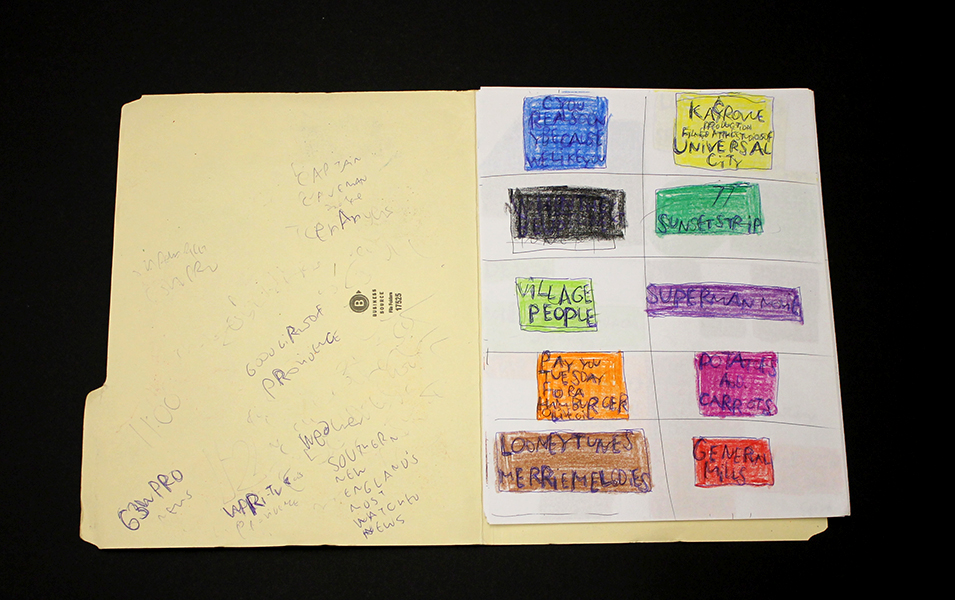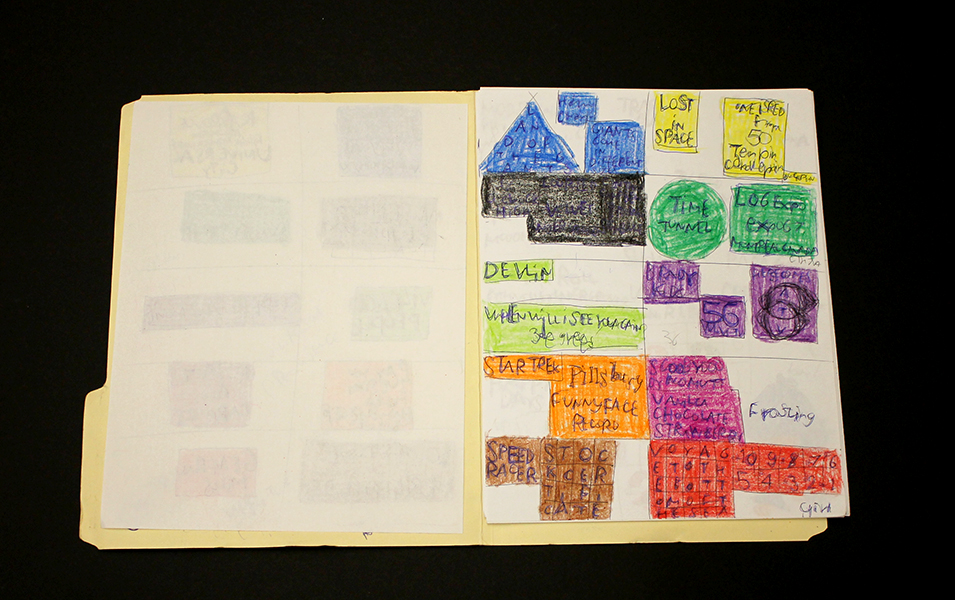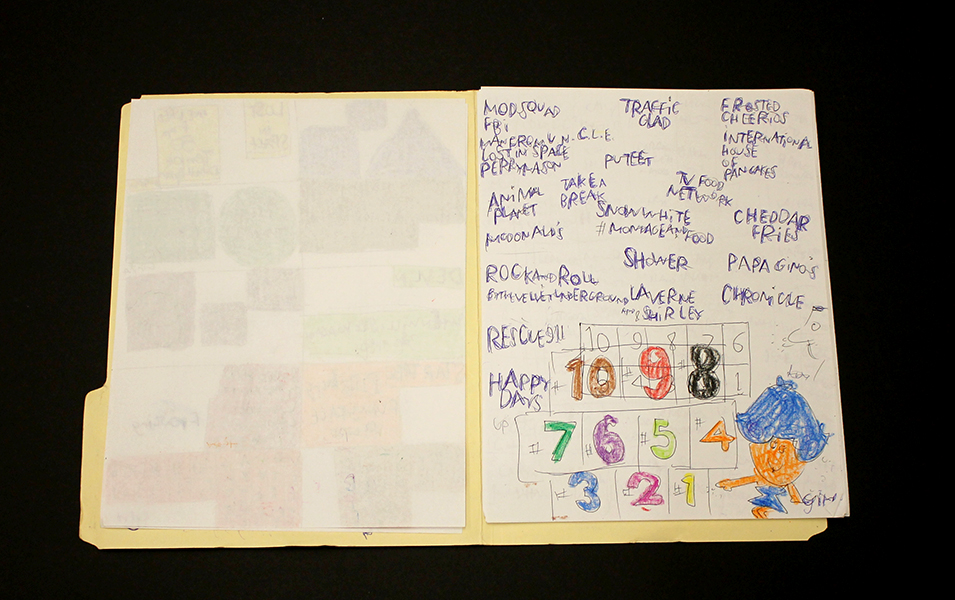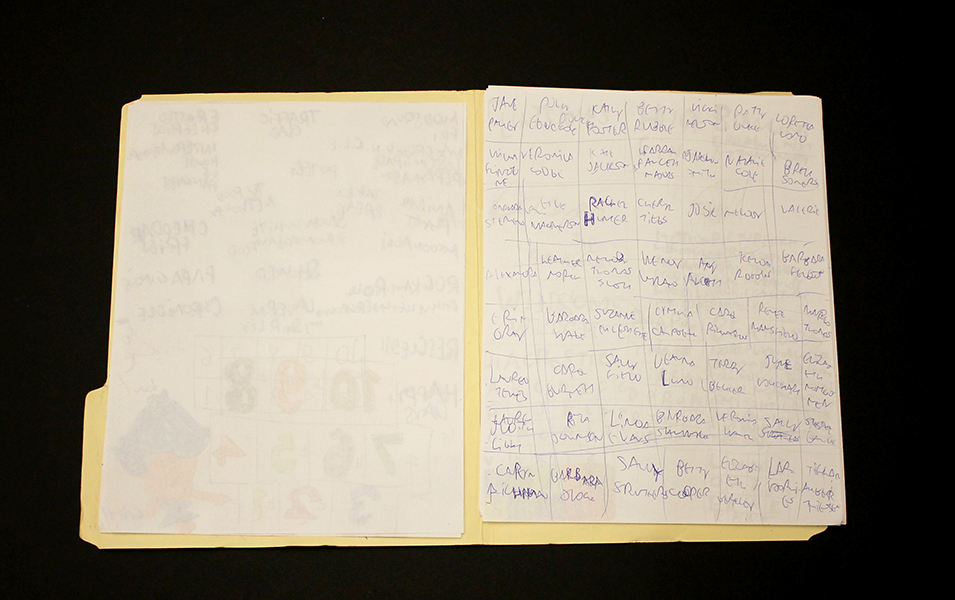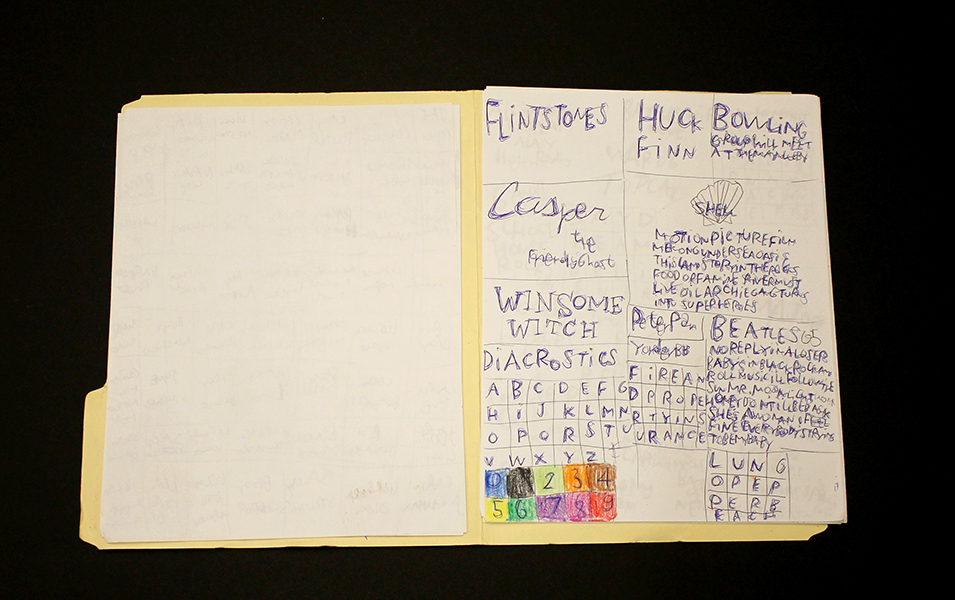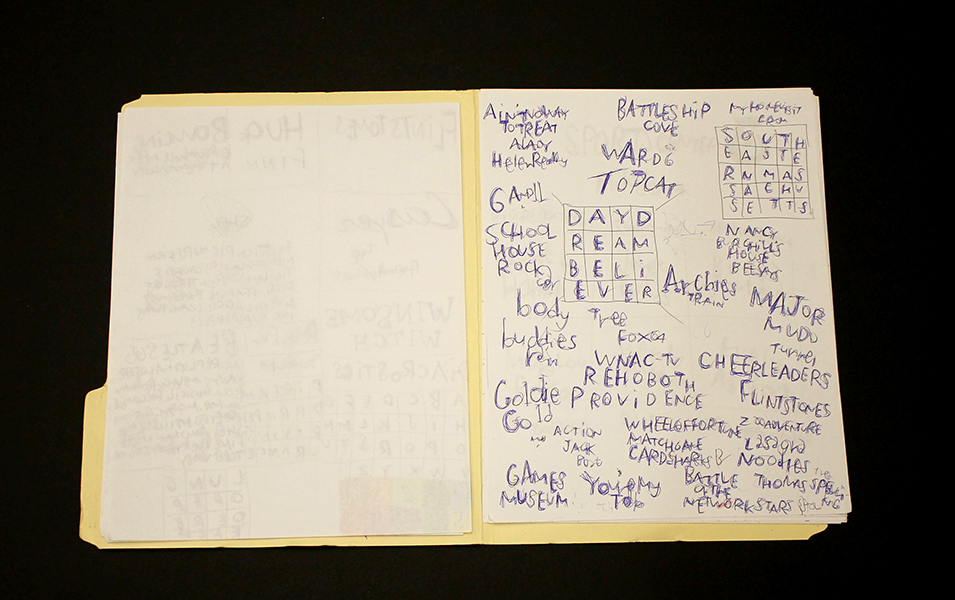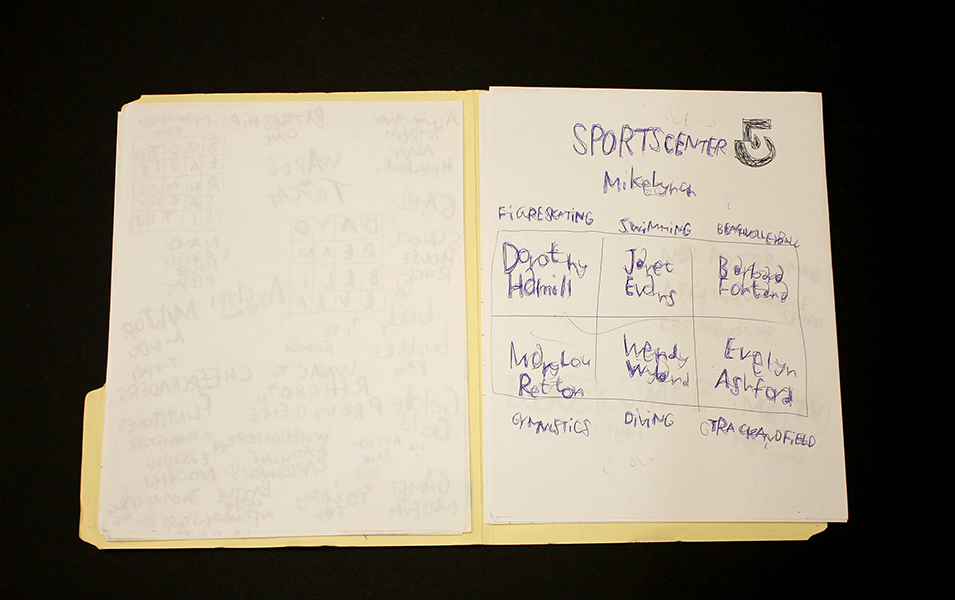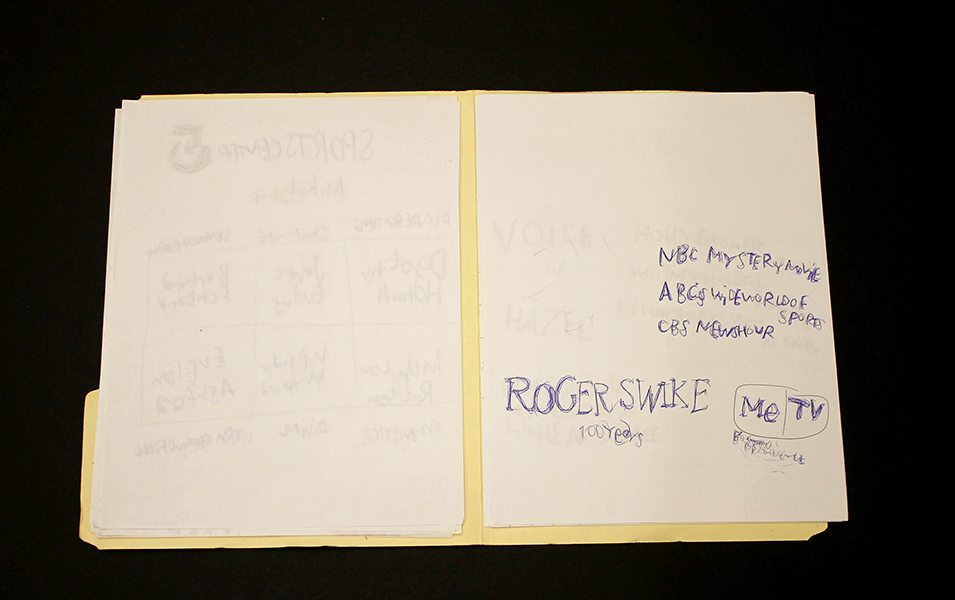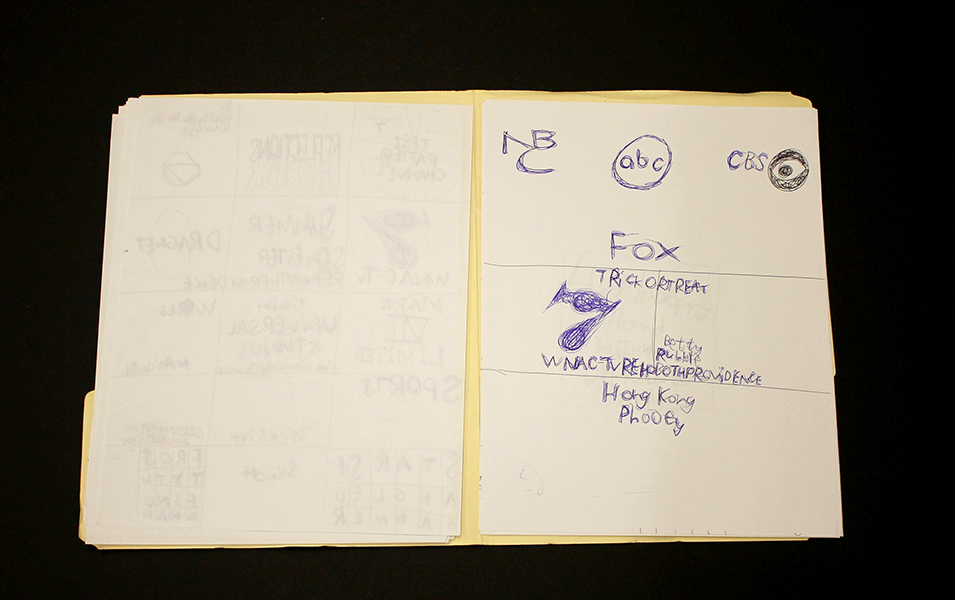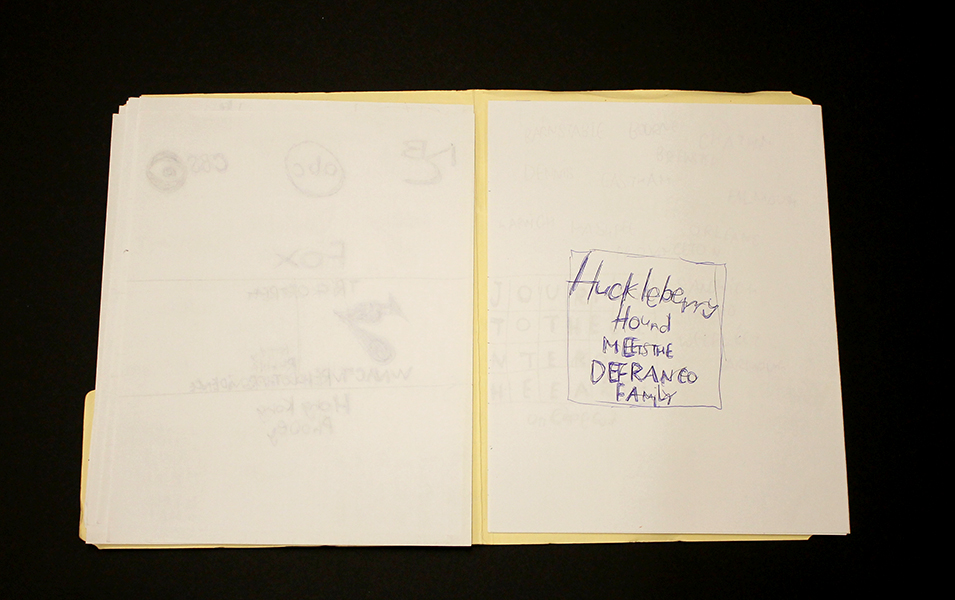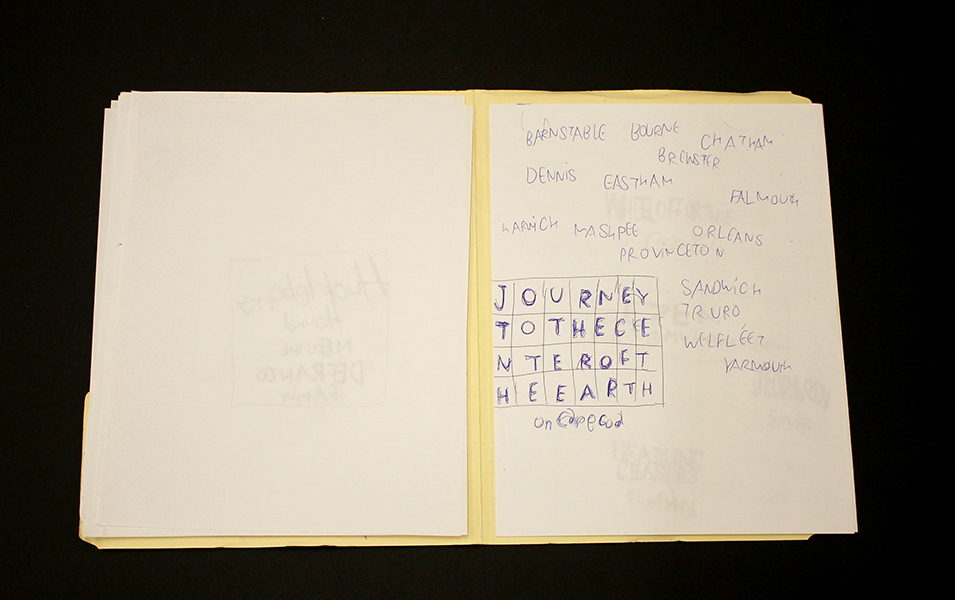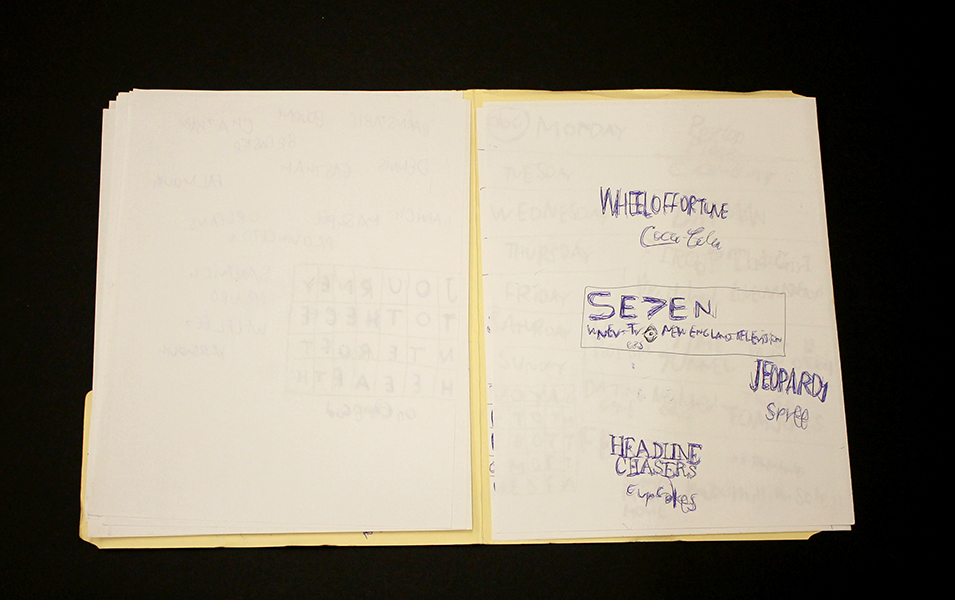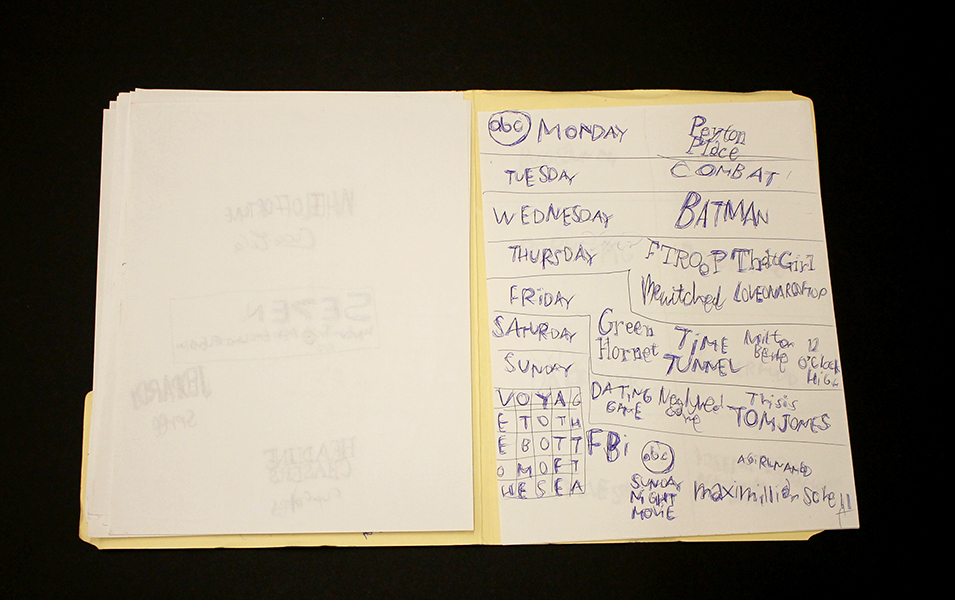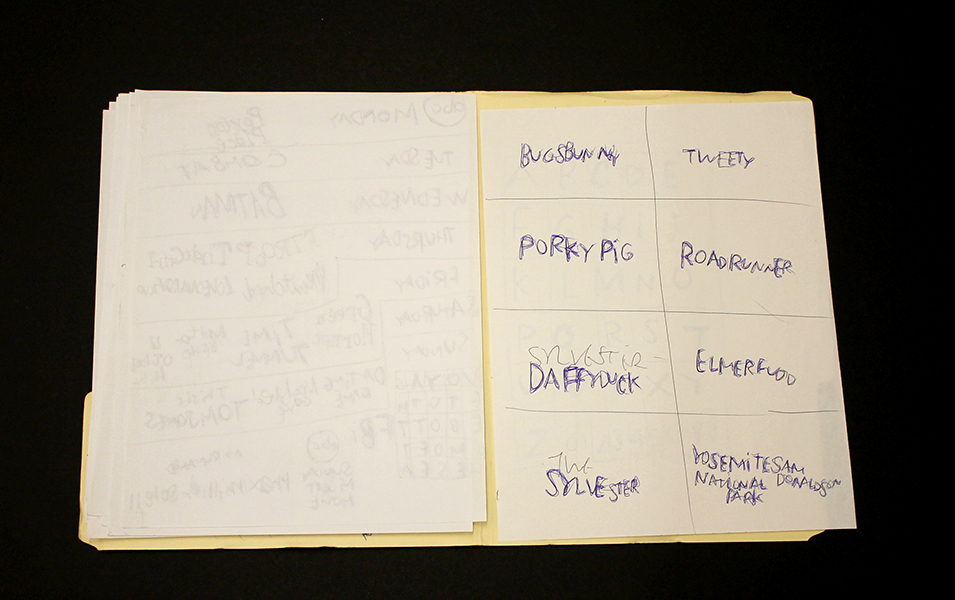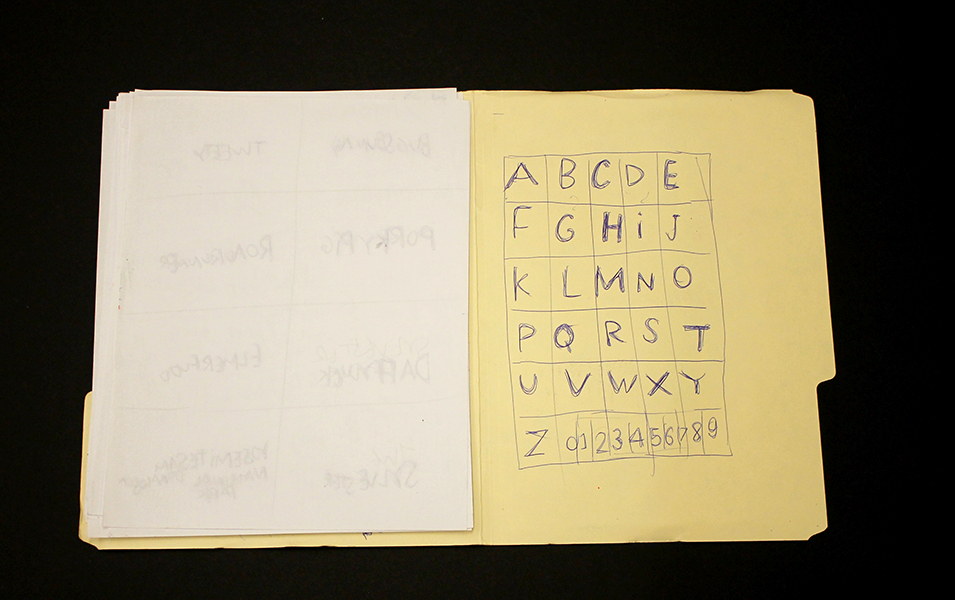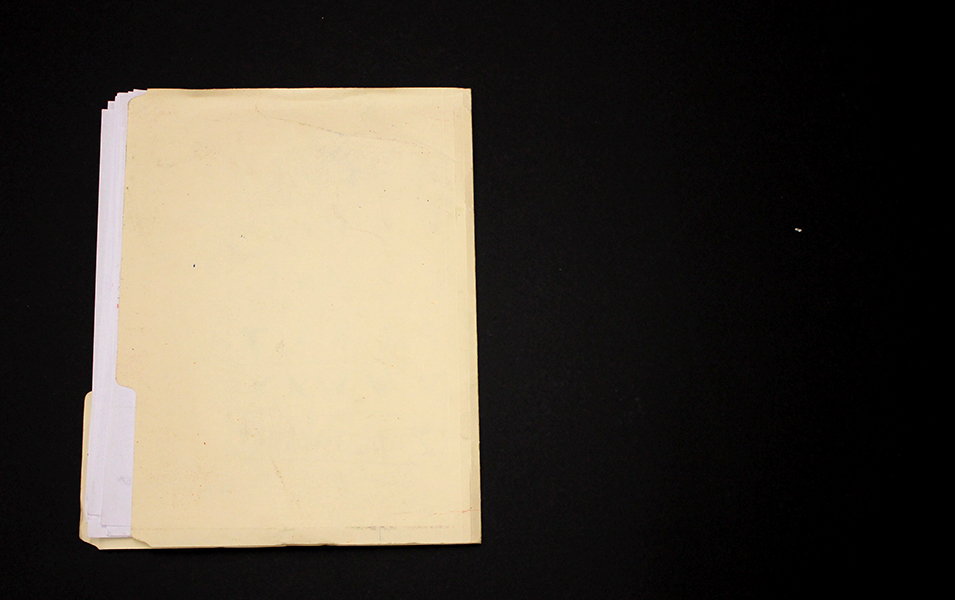As a painter, thinker, and self-described “indigenous male earthling of the United States of America”, Wilmington-based artist Carl Bailey explores concepts with a sense of wonder.
Never driven by the consensus narrative, he is only concerned with primary sources -
artworks and their respective artists, their relationship to time and place, and discovering their universal humanity...
Mapping Fictions: Roger Swike
Untitled, ballpoint pen on paper, 12 x 9 inches
Untitled, ballpoint pen and crayon on paper, 12 x 9 inches
Untitled, ballpoint pen and crayon on paper, circa 2013 12 x 9 inches
Roger Swike's ten crayons
Roger Swike is an exceptionally prolific artist who works rapidly on many pieces simultaneously; much like Melvin Way, his drawing process channels an immediate and intuitive stream of information, yet is also executed with deliberation and great intention. Swike will often revisit drawings created at different times and deliberately organize them into various color-coded folders; the resulting works are an assertive, endearing proposition about what an art object can be. Within content that initially appears chaotic or arbitrary, familiar text referring to pop culture and the exterior world is pervasive. Black and blue ballpoint pens and ten crayons are utilized as though each tool has a symbolic role. Some ideas are organized neatly into grids, others are written in less regimented clusters or lists, primarily in multiple layers of ballpoint pen. Over time, curious relationships and subtle patterns emerge, such as references to the number 7 or numbers listed on their own counting down from ten (but when listed alongside the alphabet they ascend from 0 to 9).
Because Swike’s work is disciplined and systematic, the viewer is tempted to decipher the rigid system that defines it, but the true nature of the work seems to reside in the plasticity of its rules. A grid listing Loony Toons characters deviates from the pattern to include "YOSEMITE NATIONAL PARK SAM DONALDSON", numbers are written in black ballpoint pen without an overlapping of blue pen, words or phrases are redacted, yet the sequence and grid are still drawn using the ten selected colors…often it feels as though Swike isn't creating the system, but instead exploring it as a poet does language, both fluent and curious. Each time Swike's lexicon is revisited, it presents an opportunity to rethink its mysterious nature - possibly an archive, message, map, poem, or something else entirely.
Roger Swike’s work will be included in Mapping Fictions, a group exhibition curated by Disparate Minds writers Tim Ortiz and Andreana Donahue at the Good Luck Gallery in LA, July 9 - August 27. Swike (born in Boston, 1962) has shown previously at the Berenberg Gallery in Boston, Fuller Craft Museum, the Outsider Art Fair, Margaret Bodell Gallery, and Phoenix Gallery in New York. He has also been awarded a MENCAP award in London, England.
We first encountered Roger Swike’s work many years ago, as studio co-managers and facilitators in a progressive art studio in Nevada; we began visiting other studios while traveling (before the inception of Disparate Minds). Swike has maintained a studio practice at Gateway in Brookline, Massachusetts (the oldest progressive art studio in the US) since 1995. Despite this, his extensive body of work remains relatively unknown outside of the Boston area, possibly because the art world hasn’t quite been ready for work as contemporary and singular coming from a living, so-called outsider artist.
Terri Bowden
In her boldly marked drawings, Terri Bowden portrays the figures as if they are intense, strikingly present memories - fleshy and visceral in some aspects, but broadly summarized, distorted, and surreal in others. Faces are rendered with a realism and clarity that evokes vulnerability, re-contextualizing familiar icons of distant pop culture with a mysterious, untold narrative. Bowden’s work achieves the uncommon combination of dreaminess and gritty power reminiscent of Philip Guston. Recent exhibitions include Vis-à-vis curated by Michael Mahalchick at Andrew Edlin Gallery (New York) and stARTup Fair (San Francisco); her work will also be included in the upcoming exhibition Indigo Mind at StoreFrontLab (San Francisco).
Bowden works at Creative Growth's studio in Oakland, California; from Creative Growth:
"Terri’s whimsical and quirky sense of humor is delightfully evident in her artwork. Having befriended other albinos–who, like herself, are legally blind–Terri often uses albino animals and people as the subject of her drawings. Whether it’s reimagining Led Zeppelin’s Robert Plant, pop music icon Michael Jackson, or a nondescript winking punk rocker, Terri’s ability to capture the nuances of human expression exceeds far beyond the photos she uses as reference. Her fixation on albinism extends to ceramics as well, with her pigmentless fruit, Hershey’s kisses, cookies, rabbits and ducks, all executed in the same whitish pink palette that appears in her drawings." (more)
Visionaries and Voices
Established 2003, Cincinnati Ohio
The Visionaries and Voices Northside Studio Building in Cincinnati, featuring a mural of local legend Raymond Thundersky
Ohio has a high concentration of quality progressive art studios compared to other states - 12 in 11 different cities across the state. During our research trip, we were able to visit both Visionaries and Voices (V+V) studio locations in Cincinnati. V+V embodies all of the essential qualities of a progressive art studio, providing two fine art open studio spaces that are utilized by more than 140 Cincinnati-based artists experiencing developmental disabilities. The studios are staffed by trained artists who provide non-intrusive guidance and facilitation, and the Northside location includes a professional exhibition space.
We spoke with Tri-County Studio Coordinator, Megan Miller and the Northside Studio Coordinator Theo Bogen during our visits; both are dedicated to and passionate about the mission of V+V and committed to facilitating the studio process based on what each artist is compelled to make.
an artist's work space in the studio
V+V stands out because of its professional, egalitarian culture. The relationship of the staff to the artists in progressive art studios is often simplified in terms of teaching or facilitating. In practice, the latter is defined by hands-off assistance, allowing the artist to create freely, and the former is a more codependent or antiquated approach defined by teaching or instructing in a didactic sense. V+V not only demonstrates the more progressive approach, but also in a deeper way, shows that this bifurcation is just a piece of a more complex continuum. Artists at V+V work with not only a sense of ownership of their own practice and work, but also with ownership of the entire enterprise, the studio itself. They move freely throughout it, develop personalized workspaces with ongoing projects and materials, and enjoy a peer relationship with the assisting staff.
This culture may be explained by their unique history. The studio began as a work space for the late Raymond Thundersky (now a local legend), and slowly transitioned into a non-profit program over the years. The workspace was organized by a couple of social workers for Thundersky and a few other artists. The identity of the studio as a workspace provided wholey to a group of artists, as opposed to an art program functioning as a service provider, persists in the culture today, much to their benefit. Most prospective artists hear about the V+V by word of mouth and have an informal artist interview to determine if they’re a good fit for the studio. Ultimately, their admission is dependent primarily on whether they’re interested in working productively as an artist. To be productive, though, is not considered to be synonymous with being prolific, as many artists may be productively and creatively engaged without necessarily producing commercially viable or permanent works.
V+V's exhibition space
The V+V gallery usually hosts five exhibitions a year, and organizes exceptional group shows. They typically curate thoughtful exhibitions featuring 2 or 3 of their artists in a manner driven by those artists’ ideas. Sometimes artists function as curators as well. Furthermore, exhibition opportunities for artists’ work are sought out at galleries, museums, universities, and other venues on both a local and national level. In addition, a Teaching Artist Program (TAP) is offered as an option for artists that instead have an interest in pursuing visual art careers in teaching, speaking, and other leadership roles. TAP “supports those goals, while offering the community the opportunity to learn about art from a unique perspective. V+V artists who complete TAP courses bring lesson plans to classrooms, community centers, and partnering organizations all over greater Cincinnati. Each artist develops their own lesson plans customized to benefit students of all ages and abilities.”
a portion of the inventory stored at the Northside Studio.

